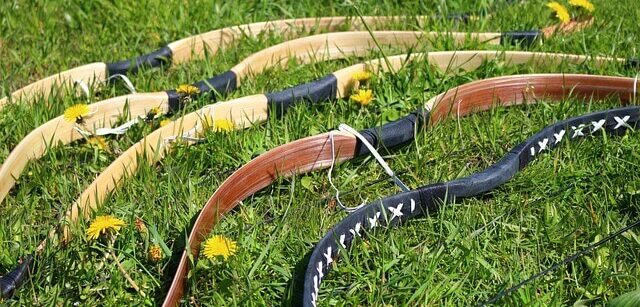
Types of Bow
There are many ways to categorise the different types of archery bows, but perhaps the easiest way to think about them is to divide them into three main types – compound, recurve, and longbows.
Compound bows are the most modern types of bow, and use all the current technology available to create an advanced bow.
Recurve bows are the most traditional form of bow and have historically been used by cultures around the world. While they have have many varying designs both modern and traditional, their unifying factor is that the limbs of a recurve bow curve or bend at the tips, away from the archer.

While the modern version of this bow is known simply as a recurve bow, many traditional types are still made and used around the world, and are sometimes called traditional recurves to differentiate them.
Finally longbows or flatbows have limbs that do not curve, but are rather relatively wide and flat when unstrung.
Contents
Compound
Compound bows are powerful and accurate, yet require less strength to use than a recurve. Designs can vary greatly but essentially this is because compound bows make use of a levering system made of cams and pulleys that bend the limbs rather than the archer having to use raw body strength.
This also means that the strength required to draw back the string is relatively equal at all stages of the draw, as opposed to recurve and flat bows where it becomes progressively harder to draw as the draw length is increased. It also means the energy in a compound bow is distributed far more evenly across the draw.
The poundage of a compound bow, which is a measure of the power of the bow, can vary from 40 to 80 pounds.
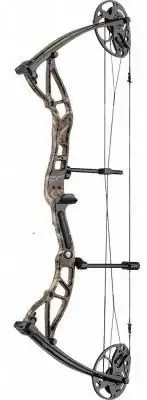
Recurve
This can cover a wide variety of bows as a lot of traditional bows are also recurve bows. However, when people refer simply to a ‘recurve bow’ they usually mean the modern recurve.
Modern Recurve
This type of bow is the modern day equivalent of the traditional recurve bow. As with all recurves, the limbs bend away at the tips. The limbs of many modern recurves can also usually separate from the central part that is held by the archer when shooting. This central part is called the riser.


This makes them convenient to carry and transport. The curve is more pronounced and easier to see when the bow is unstrung. Modern recurves are the type of bow used in the Olympics. Modern recurves tend to be between 20 and 60 pounds, and will have sights and other useful modern technological additions.

Barebow
This type of bow is essentially a modern recurve without any of the accessories allowed for aiming or stabilising. These test an archers skill in a more traditional manner while still using a modern recurve bow. The poundage of these bows are the same as modern recurves, usually between 20 and 60.
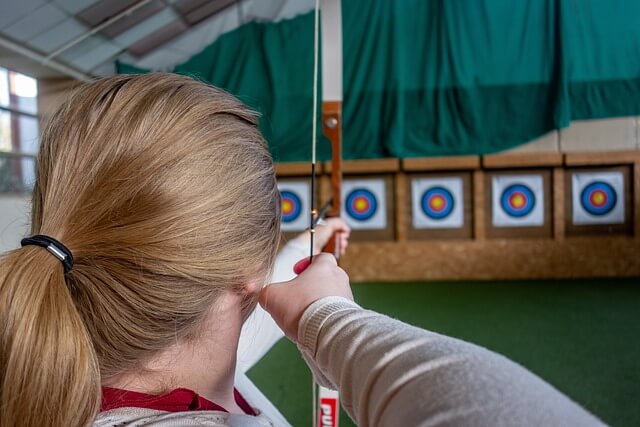
Traditional Recurve
These are recurve bows made in a more traditional manner. Cultures that historically valued the recurve bow and made innovations in their design include, Turkish, Asian (Korean, Mongolian, Chinese), and Native American. Traditional recurves made today often make use of designs from these cultures.
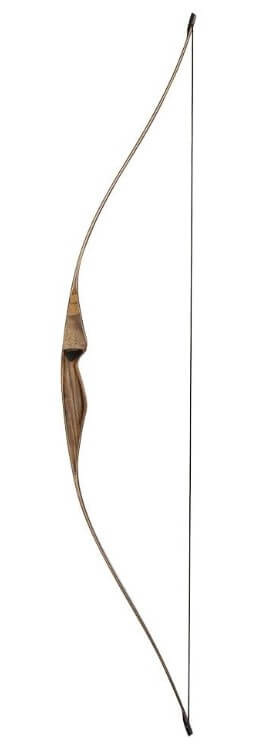
Traditional recurves are usually between 20 and 60 pounds
Horse Bow
This is a particular type of traditional recurve bow, which is designed to be used on horseback. Most styles originate in Asia and the Middle East. They have shorter limbs making them more practical for use while mounted on a horse, but are used by many archers in general today due to their small size and practicality.
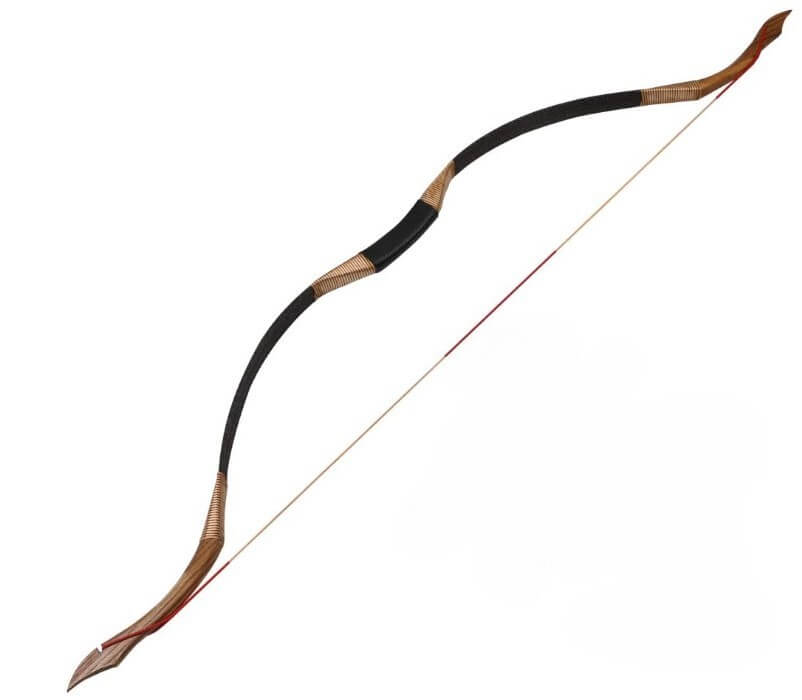
Horse bows are usually no more than 50 pounds as they need to be used at speed, though the poundage can sometimes be higher.
Longbow or Flatbow
Longbows, unlike recurves, are relatively flat when unstrung. In the UK there is a long tradition of longbows, and only those made from wood are termed longbows. Bows that have limbs that are relatively flat but made of other materials are termed flatbows. However, in other countries the term longbow can apply to any flatbow regardless of the material used, while those made in the English tradition are usually known as English longbows.
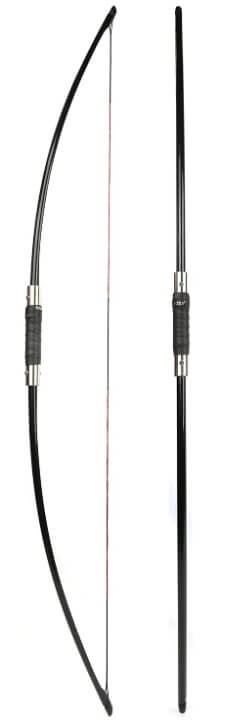
English longbows are usually between 80 and 180 pounds. The longbows found in King Henry VIII’s sunken ship, Mary Rose, were all between 140 and 160 pounds.

Crossbow
This is a horizontal bow with a release mechanism akin to a trigger on a gun. These types of bows are in their own category and you don’t see them competing against other the other types of bows above. They are only listed here as they are often mentioned alongside the other types of bow. Out of interest their poundage is usually between 150 and 175 pounds.
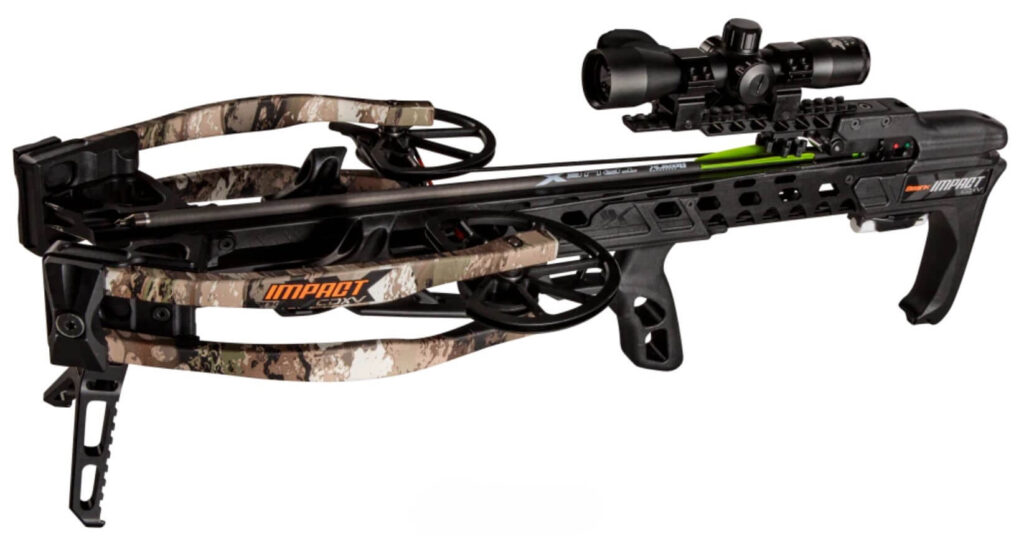
So now we’ve covered the different types of bows, which one is the best?
The Best Type of Bow?
The answer to this will differ from archer to archer, and depend on the type of bow and archery they prefer. I believe the answer is also driven by one’s personality. Those who love modern technology and gadgets might find themselves naturally attracted to compound bows, while those with a love of history and aesthetics might prefer traditional recurves.
Having said that, I could be neutral, conclude that the best bow depends on your own tastes and requirements, and leave it there. But as I am personally attracted to traditional recurves, I am going to suggest that, in a way, they are the best – though I do think modern recurves are very close behind.
Aesthetics
Let’s first quickly cover off looks. If I put a compound, recurve, and longbow next to one another, which one do you think looks the best?
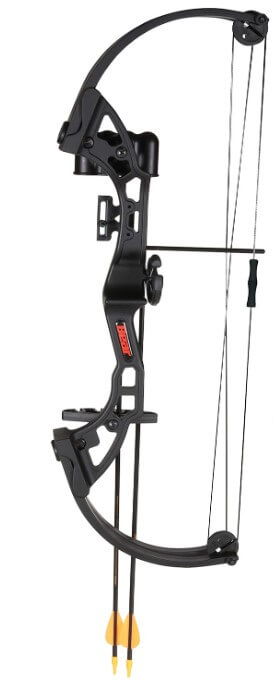


The compound bow looks like a contraption from the steam punk age. It was clearly designed with pure function in mind, and that is fine in terms of practical use. But I wouldn’t say it is beautiful. Unless you find that type of thing beautiful in its own way, like how some people would find Frankenstein beautiful.
The recurve and longbows are more pleasing to the eye, with the traditional recurve really holding its own as a beautiful object. I don’t think I need to argue its case – it speaks for itself. I’ll just say that it’s beautiful enough that you might just want to have one displayed in your house.
Distance
How about comparing them against each other for what they are actually made for: shooting arrows. Let’s first consider distance. People have tried shooting arrows the furthest they possibly can, and these are the current distance records for each of the three types of bow, depending on the type of arrow used.
With a light flight arrow made for travelling as long a distance as possible:
- Recurve = 1222m
- Compound = 1207m
- Longbow = 412m

With heavier hunting arrows:
- Compound = 717m
- Recurve = 481m
- Longbow = 270m
So while the recurve can shoot the farthest overall, when using heavier hunting arrows it is the compound that wins; and by a good margin too. If you were actually trying to hunt game, and wanted to do so from a long distance, than the compound would seem to be the bow to choose. Although, most hunters would rarely need to hunt their prey from such long distances. Still, the compound does have a clear advantage in this regard.
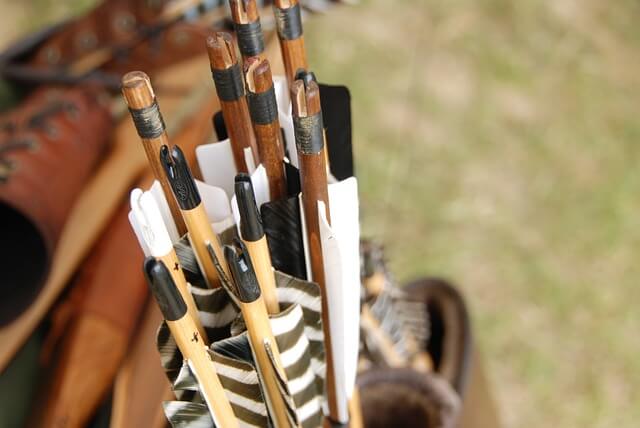
Power
This brings us to an interesting comparison. It is important to point out that although the poundage determines how much force is needed to pull the string back to the anchor point, it does not determine the speed or power with which a particular type of arrow will fly. That will also depend on the type of bow in conjunction with the type of arrow used.
A 70 pound longbow, 55 pound recurve, and 35 pound compound bow will all shoot the same weight arrow at about the same speed and distance, though the overall results will greatly vary depending on the chosen bows and arrows. And of course the archer’s form and technique will have a huge impact too, substantially more so with the recurve and longbow.
So, pound for pound a compound bow will provide more power than a recurve, both of which will provide more than a longbow. The higher poundage figures of the longbows given above probably make more sense now too.
So there you have it. Each of these types of bows have their advantages and uses, and there are plenty of fans of each type. In a way it doesn’t matter which type you choose; you may even want practice with more than one. I’ll leave you with another beautiful bow:



